A travel story from Egypt A travel story by Kristin Häsler When my family and I stepped into a plane heading to Egypt in late August 2019 all of us were excited for a packaged vacation in Hurghada. What I personally really wanted to do however, was to see as much of the rich culture and history of the country as I could within one week. Luckily it wasn’t difficult to persuade all family members to join me on a trip to Luxor, into the desert right outside Hurghada as well as on a snorkeling trip which I did with two out of the four family members that were with me in Egypt. This travel story will mostly be about Hurghada and Luxor even though I will try my best to outline the rest of the country as well without having been to places such as Cairo or Alexandria. It will also be about how inclusive a packaged holiday with different day trips in Egypt can be since one of my family members was disabled at the time. There will be some issues which I experienced and that have a lot to do with how sustainable and responsible an individual can be but also how sustainable and responsible a society can be. Come with me on this journey through Egypt, starting in the north with Alexandria and ending by the red sea in Hurghada. STANLEY BEACH IN ALEXANDRIA AN OVERVIEW OF EGYPT FROM Google Maps WITH ALEXANDRIA AND CAIRO IN THE NORTH, HURGHADA AND SHARM EL-SHEIKH IN THE EAST, LUXOR IN THE MID-EAST, AND ASWAN IIN THE SOUTH Alexandria This city by the mediterranean sea, named after Alexander the Great who founded it, can be reached easily by plane from Europe or by a roughly three-hour drive from the Egyptian capital of Cairo. THE CATACOMBS OF KOM EL-SHUQQAFA AND THE ABU ABBAS AL-MURSI MOSQUE (PICTURE-OWNERSHIP OF PLANETWARE INC.) Like many other places in Egypt you can find different landmarks and architectural sights here. In the pictures above you can see two of them. The Catacombs of Kom el-Shuqqafa have greek-roman origins and contained 300 mummies – which are not to be found at the catacombs nowadays -, though the catacombs were only built for one family. They were discovered coincidentally in 1900. Above ground, another historic and typically Egyptian landmark is the Abu Abbas al-Mursi Mosque. It was built in 1775 and is Alexandria’s biggest mosque. The name-giving Abu Abbas al-Mursi was a Egyptian sheikh from Andalusia/Iberian Peninsula which was muslim from 711 to 1492. Cairo Busy streets, world-class museums, and the pyramids of Giza. This is the capital of Egypt, Cairo. With roughly 9.1 million inhabitants it is Egypts biggest city as well. Cairo is said to be the political, economic and cultural center of Egypt and even of the Arabic World. By far the most significant landmark are the pyramids of Giza as well as the Sphinx, although this landmark lies outside the city of Cairo. The pyramids were built approximately from 2550 to 2490 B.C. by the pharaohs Khufu, Khafre, and Menkaure. The largest of the three main pyramids, the Great Pyramid or Pyramid of Cheops built by Khufru, is some 147 meters high. The famous Sphinx belongs to the second tallest pyramid which was built by the son of Khufru, Khafre. The Sphinx is supposed to resemble a lion’s body and a pharaoh’s head. The pyramids of Giza do not only consist of the three pyramids named above. There are also three significantly smaller pyramids, namely the Pyramids of Queens. THE SPHINX IN FRONT OF THE PYRAMID OF KHAFRE AND THE SITE OF THE PYRAMIDS OF GIZA SEEN FROM A PLANE Egyptian history and culture does not only rely on pyramids. At The Egyptian Museum in Cairo much of the archaeological discoveries of Egypt can be observed. Visitors can look at statues, sarcophags – coffins for deceased Egyptians who had a high standard of living, e.g. pharaohs – , masks, and other Pharaonic antiquities. The museum is located in downtown Cairo and the Ministry of Tourism and Antiquities provides more information about a visit to the museum such as collections, opening hours and entrance tickets. By the Red Sea If you were to follow Road 11 from Cairo to Suez and then continuing by the Red Sea, you would reach probably one out of the two most popular holiday destinations in Egypt – measured by foreign tourists. This is namely Hurghada to be exact (the other destination would be Sharm el-Sheikh on the Sinai Peninsula). Hurghada is where my family and I stayed in 2019. It was a packaged vacation like any other with a hotel complex that you theoretically wouldn’t have to leave for the duration of your stay since there was a private beach, plenty of water slides, different pools, and restaurants. However, this is not how we wanted to spend our time as this would get quite boring. We decided to book some trips. A day-trip to Luxor and The Valley of the Kings was the first one we did. Hurghada in general is a good starting point for those visitors who would like to see a bit of the desert, plenty of history, as well as have fun at the beach and in the water. CROSSING THE RIVER NILE IN LUXOR AND ENGRAVED COLUMNS AT THE KARNAK TEMPLE COMPLEX IN LUXOR Luxor and Valley of the Kings Our day-trip to Luxor started very early in the morning as we had a 5-hour drive through the desert ahead of us. It is more comfortable to drive in the dark when it is not extremely hot yet. What immediately catched our eyes was the huge amounts of garbage by the side of the road. Countless empty water bottles, used tires, single-use plastic and much more. Egypt has a significant problem when it comes to disposing garbage. The garbage collection system in Egypt is a private sector and disposing garbage is expensive. This is why garbage is often just dumped in landfills, or – as we saw – by the side of the road. Luckily there are some NGOs who try to deal with the problem but there. However, the Egyptian tourism industry must take responsibility as well and it in fact already is in some ways, for instance regarding water use. The tourism industry is especially accountable for a lot of plastic bottles and single-use plastic. When we first reached Luxor at noon, we had lunch at a little restaurant with some other visitors. One of the things I really enjoyed in Egypt was the food and how diverse it can be even though the ingredients are often very similar (lamb meat or poultry, rice, garlic, beans, tomatoes, etc). After lunch we headed to the Karnak Temple Complex in Luxor which is located close to the river nile. As I mentioned before, one of my family members was disabled at the time. Our tour guide for the day was extremely kind and caring which is why he organized a wheelchair for the day. He even went as far as pushing the wheelchair the whole day in 40° Celsius and more. For me, this connected inclusiveness and kindness. We thanked him over and over but for the tour guide it was obvious that he was doing this for us. This kindness could be experienced with any person we met during the day and even the whole week – wherever we went. Egyptians are just really hospitable people and even though there might have been some language barriers, the communication was always there and it was at all times extremely nice and positive. A ROUGHLY 10-METERS HIGH STATUE AND ENTRANCE TO THE COMLEX (AVENUE OF THE SPHINX) At the Karnak Temple Complex which is an accumulation of different temples, chapels, obelisks and other buildings. There are countless hieroglyphs to be observed but one can also get lost in the many different building types and pathways throughout the complex. This sight was added to the UNESCO World Heritage List in 1979 and is believed to be the second most visited historical site in all of Egypt right after the Pyramids of Giza. Once again the Ministry of Tourism and Antiquities can give more background information as well as visiting hours and ticket prices. After visiting the Karnak Temple Complex we went to the well-known Valley of the Kings outside of Luxor, on the left side of the river Nile. ENTRANCE TO THE VALLEY OF THE KINGS AND DRIING BY A CONSERVATION PROJECT ON THE LEFT SIDE OF THE RIVER NILE After passing over the river we drove by a conservation project which showcased some damaged statues. Unfortunately we drove by so fast that we couldn’t read the information which can be seen in the picture above. The Valley of the Kings as opposed to the great pyramids consists of hidden underground mausoleums and is the burial place of the Pharaohs of the New Kingdom of Egypt. The most famous pharaoh who was buried there was Tutankhamun. Visitors can enter many of the mausoleums, for instance also the one of Ramses II which my family and I took a closer look at. For those interested in seeing how Tutankhamun was buried, there are some additional fees to be paid in order to enter his mausoleum. Our last destination on that day was Deir el-Bahari with the Mortuary Temple of Hatshepsut. This site is part of the Theban Necropolis which was designated a UNESCO World Heritage in 1979 just as the Karnak Temple Complex. The site is quite protected by officials and you only get to enter it by passing a bazaar and then you are driven up to the temple with a little train on wheels. This is mainly because in 1997 there was a terrorist attack called the Luxor massacre at the Temple of Hatshepsut. 4 Egyptians and 58 tourists were massacred then. Nowadays, visitors do not need to worry more than at any other place or site in Egypt or the World for that matter. There is a certain danger everywhere you go in the world but that doesn’t mean that you have to live in fear all the time, especially not on vacation. A DAY IN THE DESERT VISITING A BEDOUIN VILLAGE IN THE DESERT NEAR HURGHADA The second day-trip we made was not too far away from Hurghada. We were driven to the outskirts of the Egyptian desert near Hurghada. There the plan for the day looked as follows: First a self-drive experience on buggies and quads, then a Jeep-drive through the desert which was followed by a visit to a bedouin village. Then a drive back to the starting point where we were served dinner and watched the sunset. The evening consisted of a cultural show with traditional dancing. Before we left we got the chance to view the stars, planets and the moon through a telescope. The vehicles that were used that day (buggies, quads and Jeeps) did emit CO2 and they still do until there might be other sustainable options. Such a trip and those activities must therefore be considered unsustainable in ecological aspects. However, CO2 emissions are to be found with nearly every activity in Egypt. Whether you go into the desert or to another destination by car or bus, take the motorboat to an island, or even take the plane to the country itself – those emissions can unfortunately not be bypassed entirely. Here’s one thing that happened and one thing that I noticed.: One incident I had on that day was that my pants severely ripped when I first got onto the quad. This is embarrassing for many reasons. However, the most significant reason for me was that we were to visit a strictly muslim bedouin community later that day and I didn’t have a chance to fix my pants. For me this had a lot to do with respect for the community and for the culture. So, I did everything I could to cover up by borrowing cloths and other spare pieces of fabrics in order to not insult the people that would welcome us into their village. My recommendation for anyone would therefore be to wear comfortable and not too tight clothing on such occasions. For one’s own sake and for the sake of respecting other cultures. One thing I noticed while visiting the bedouin village was that we were shown different practices such as baking traditional bread. In a CBT context I think it would be much nicer to integrate visitors into carrying out such practices. However, there might be difficulties in communication and religion might also play an important role. Either way it was very interesting and educational to visit this village and to see how certain things are done, even if probably not in the most realistic way since there are groups of people visiting several times a day. This is why the inhabitants probably have to showcase the same activities – such as baking bread – again and again throughout the day. A FEMALE INHABITANT OF THE BEDOUIN VILLAGE BAKING TRADITIONAL BREAD AND DRIVING TOWARDS THE VILLAGE IN JEEPS If I were to give this experience an evaluation, I would give it a 9/10. The diversity of activities on that day was extremely enjoyable from adrenalin in the morning to entertainment in the evening. I would not give it a 10/10 because the visit to the village was questionable in terms of being realistic or not as mentioned before with repeating the same activities several times a day. Nonetheless I would do this day-trip again and I would also recommend it to any other visitors vacationing in Hurghada. For those who are planning on taking on a slightly more challenging experience, the Sinai Trail Hike might be good to mention here. This trail on the Sinai Peninsula which is neighbouring Israel is 220km long and takes 12 days to complete. Hikes can even be led by Bedouin women such as Umm Yasser which is quite uncommon since women are supposed to take care of the household and leading a hike is opposed to that a source of income. Are we in the Maldives or in Egypt? One day before leaving Egypt, some of us decided to go on a snorkeling trip. This trip included a boat ride to an island with a beach bar and relaxing lounge, snorkeling at two reefs, and lunch on the boat. ON A BOAT WITH A VIEW TOWARDS HURGHADA AND THE DESERT IN THE FAR BACK Our first stop that day was the island of Giftun with white-sand beaches and shallow and turquoise waters just like in the Maldives. There we could just relax and swim in the sea. There were also two photo spots where one would have to queue up just for taking a picture. Those spots were a swing set and a hammock in the water. GIFTUN ISLAND (PHOTO-OWNERSHIP OF Get Your Guide) From Giftun island we went to the first snorkeling spot. Snorkeling and diving can be seen as controversial since coral reefs are extremely vulnerable and dying around many places in the oceans of this world. Snorkeling around this first reef was much easier, especially in terms of the vulnerability of the reef. We could easily watch the many different and colourful fishes and corals from afar without damaging the reef or any animal in the water. We were able to hold enough distance to the reef because it was deeper than the second one and there was much more free space surrounding it since the boats kept a distance as well. This was very important to me and should be considered by anyone who is planning on doing a snorkeling or diving trip. The second coral reef however was in quite shallow waters and very spread out. In addition, there were more tourists in the water than at the first reef. There, it was nearly impossible to not touch the reef at some point. This is why I decided very early in the process to swim around the whole reef instead of swimming through like anyone else. Unfortunately the focus here is on anyone else. It is very likely that damage to the coral reef was made that day which is very sad and should be addressed to tourists before they even book such a trip. SNORKELING BY A CORAL REEF NEAR GIFTUN ISLAND Again, there is the question “would I do it again?”. Yes I would. In my opinion, the important thing with snorkeling is that everyone should educate themselves beforehand and everyone should begin to think more responsible. So maybe if anyone ever is in the situation of being so close to a reef that there likely will be damage to it – go around and not through. You are most likely to still be able to see colourful fish and other animals such as stingrays and starfish. Goodbye and see you again Egypt can definitely be challenging at times with its extreme heat, the lack of drinkable tap water and issues with communication. However, I would love to visit this beautiful country again with its rich culture and history but also with its different natural aspects. For anyone who’s considering to go or who already has been there: Please go for the day trips and don’t miss the variety of Egypt while only staying at the hotel complex just because it has everything “you need”. 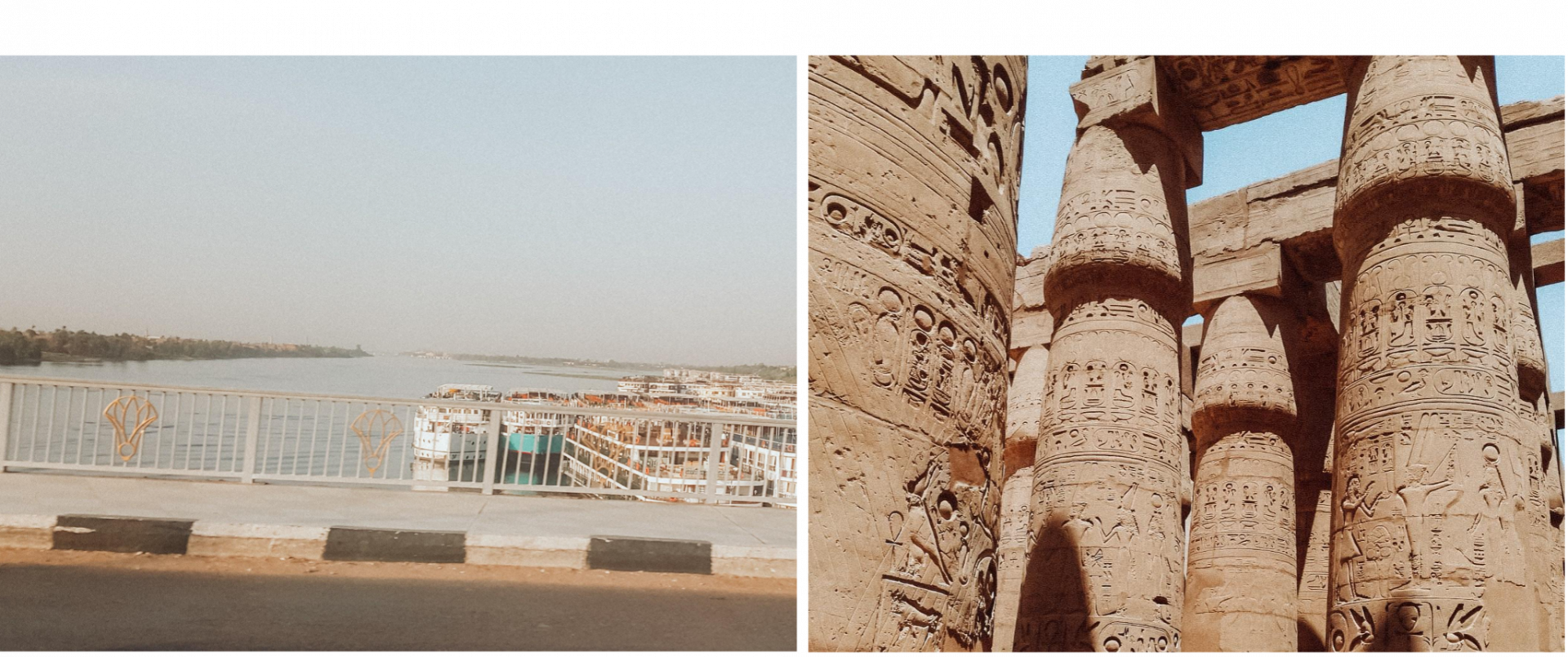
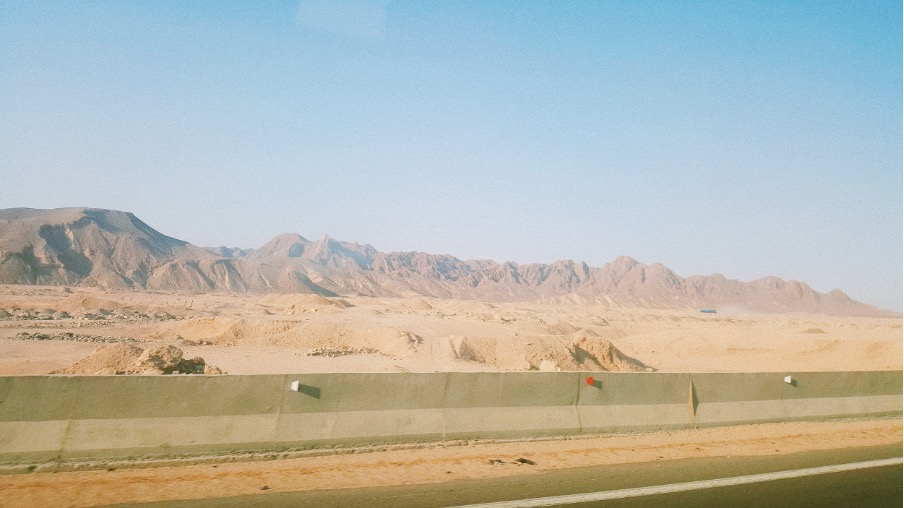 THE EGYPTIAN DESERT WEST OF PORT SAFAGA ON THE ROAD TOWARDS QENA AND LUXOR
THE EGYPTIAN DESERT WEST OF PORT SAFAGA ON THE ROAD TOWARDS QENA AND LUXOR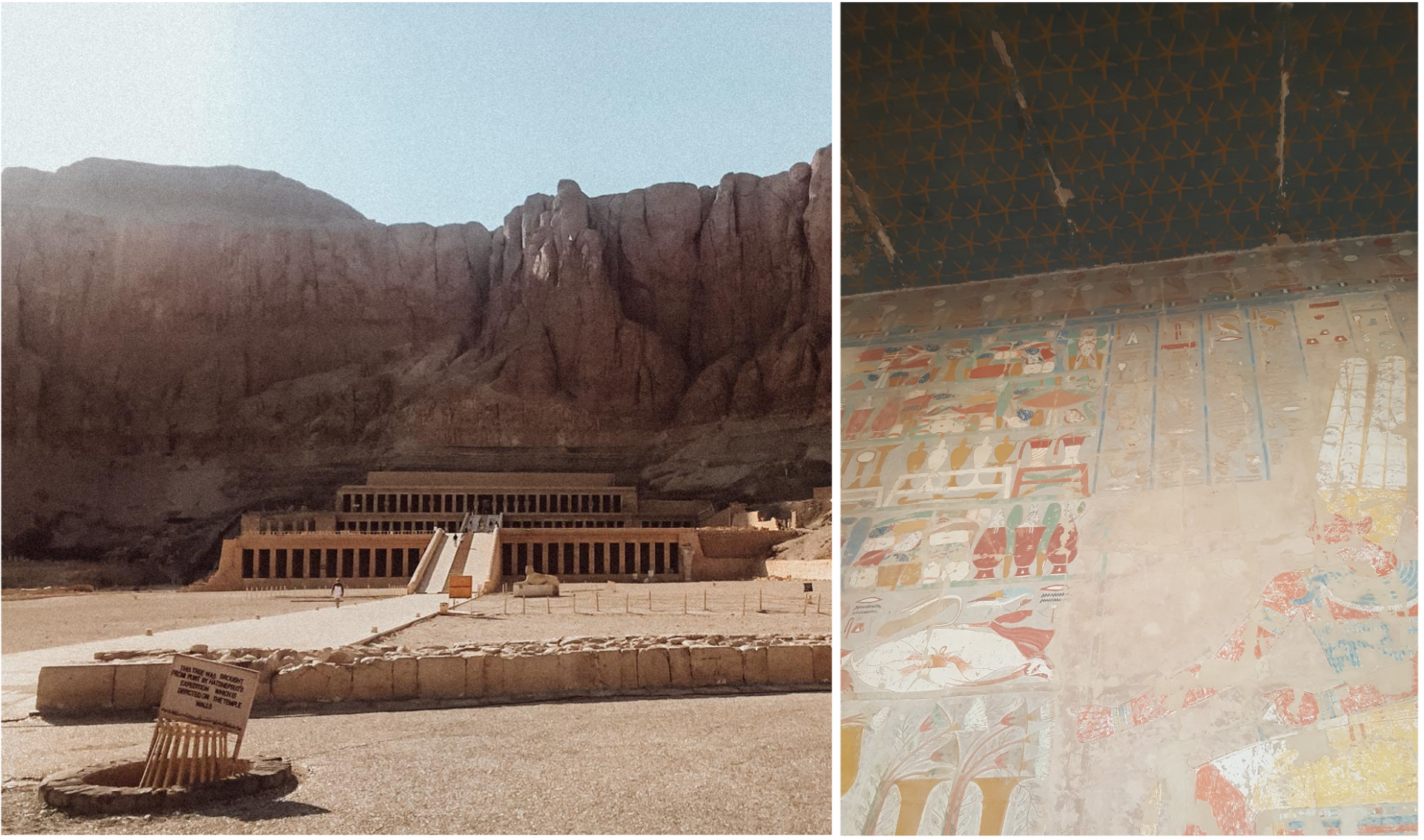 TEMPLE OF HATSHEPSUT AT DEIR AL-BAHARI AND HIEROGLYPHIC DECORATIONS IN THE TEMPLE
TEMPLE OF HATSHEPSUT AT DEIR AL-BAHARI AND HIEROGLYPHIC DECORATIONS IN THE TEMPLE


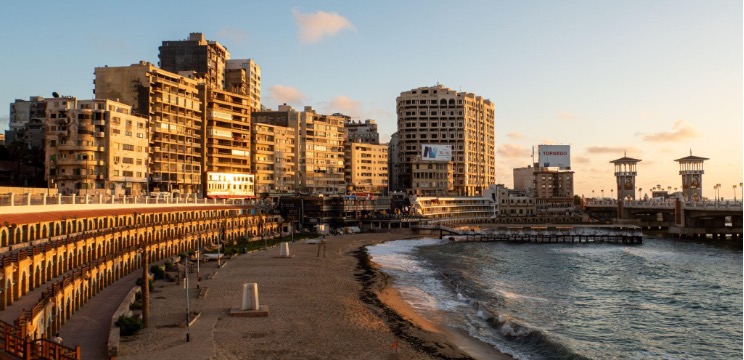
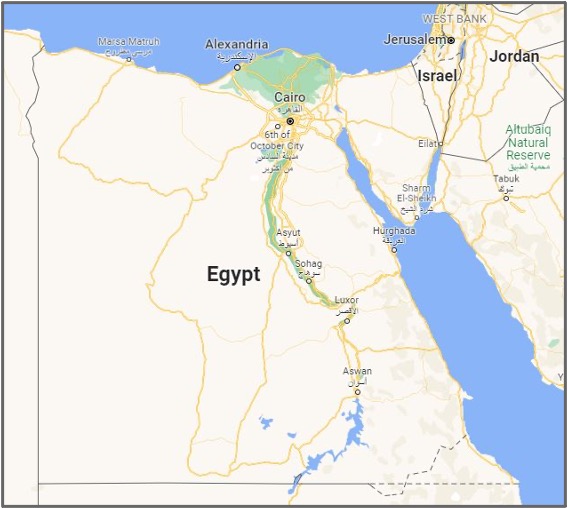
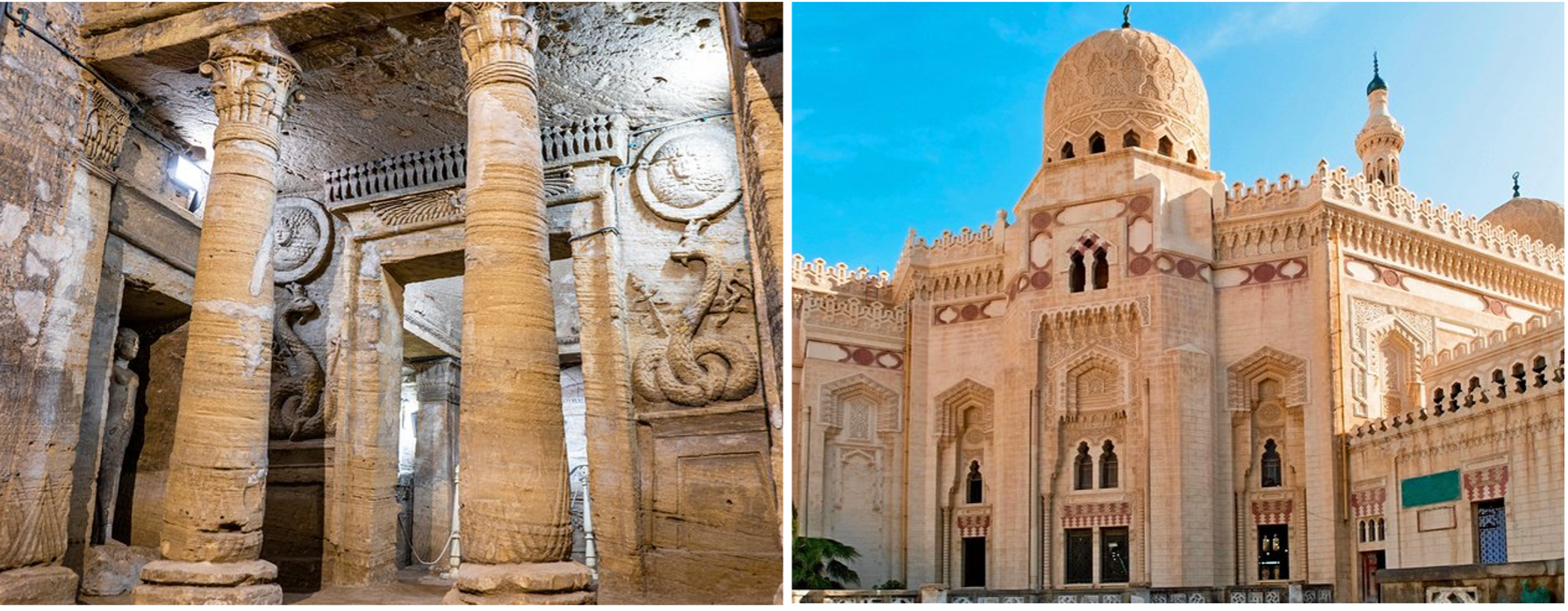
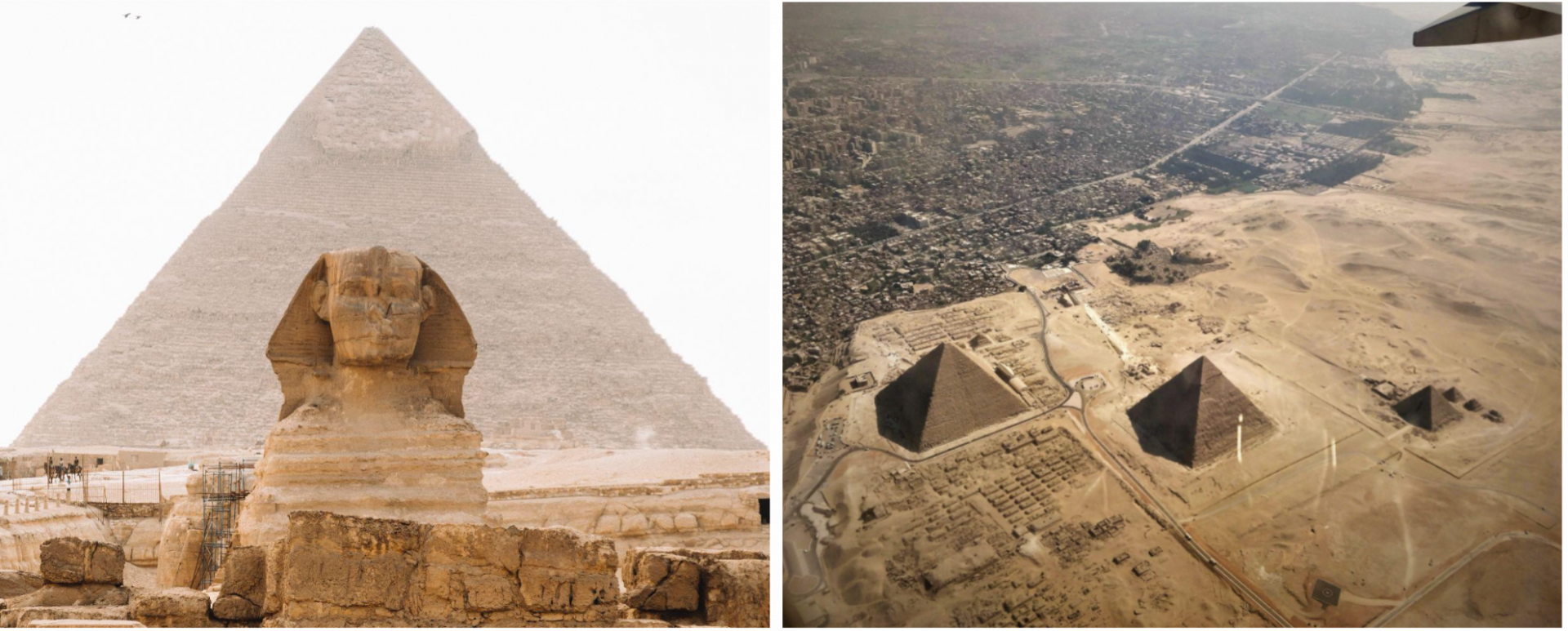
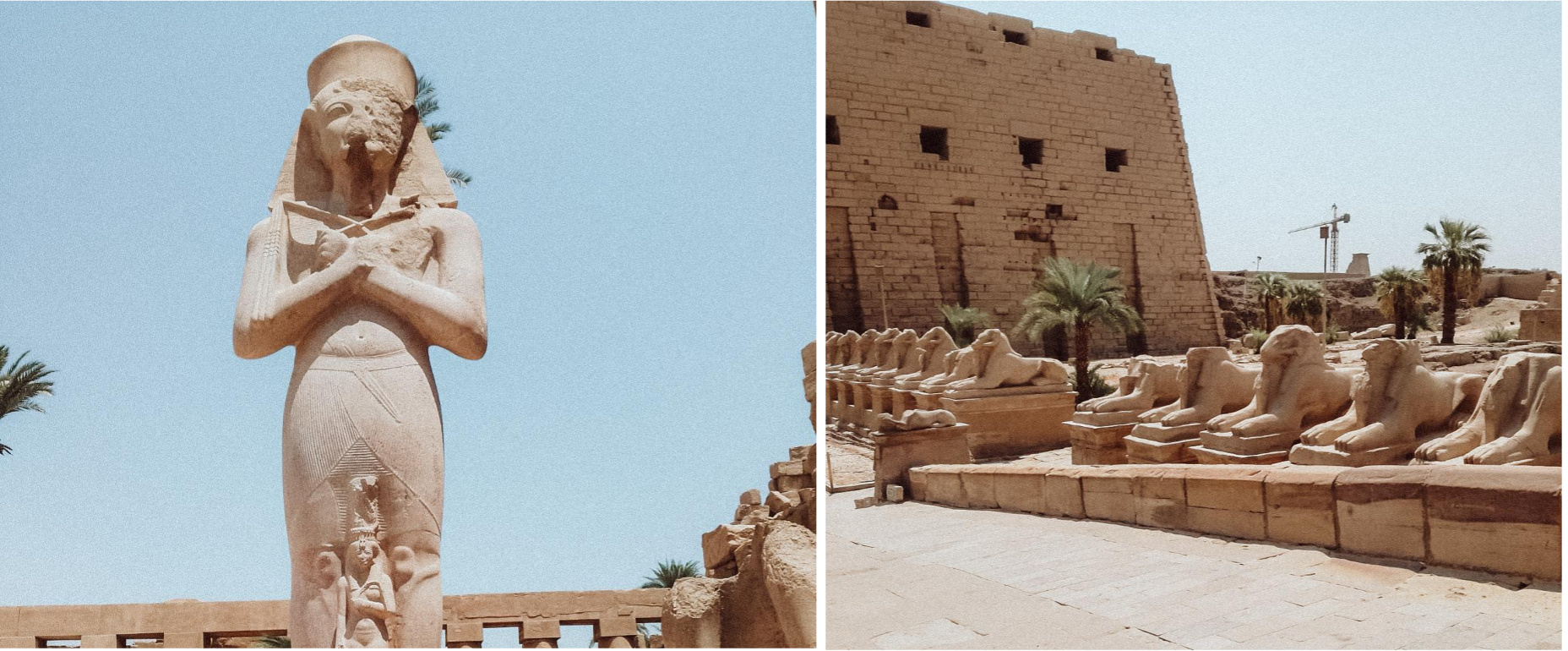
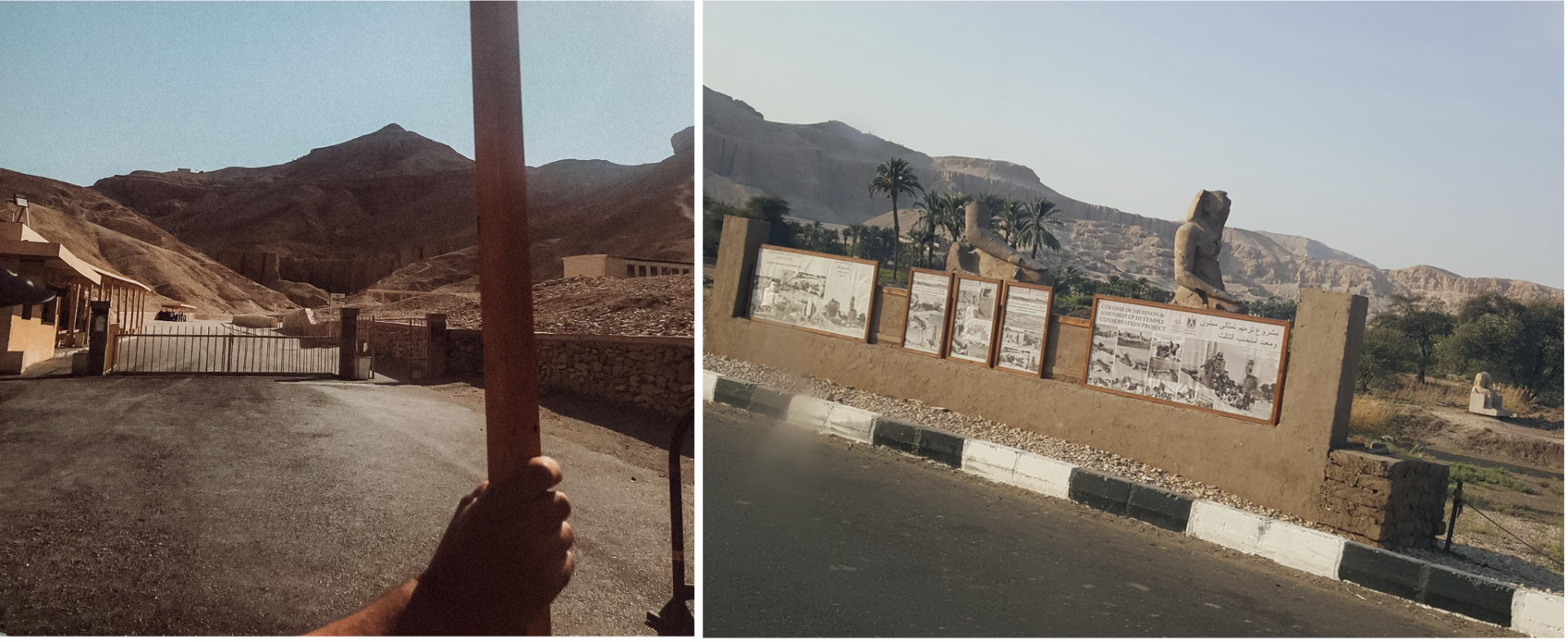
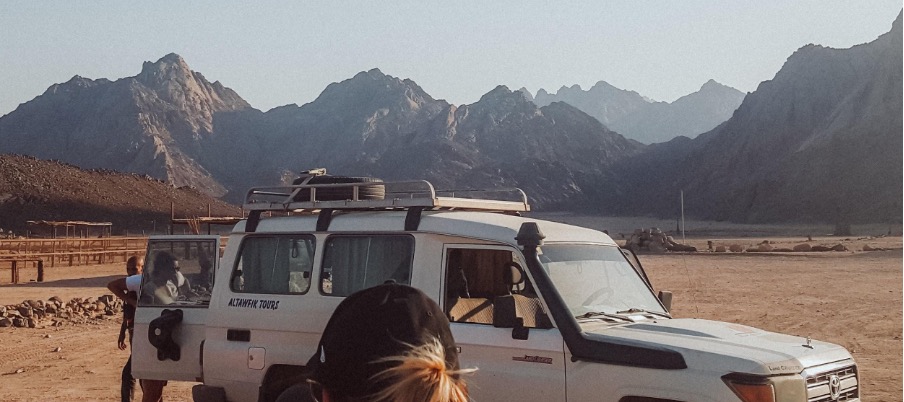
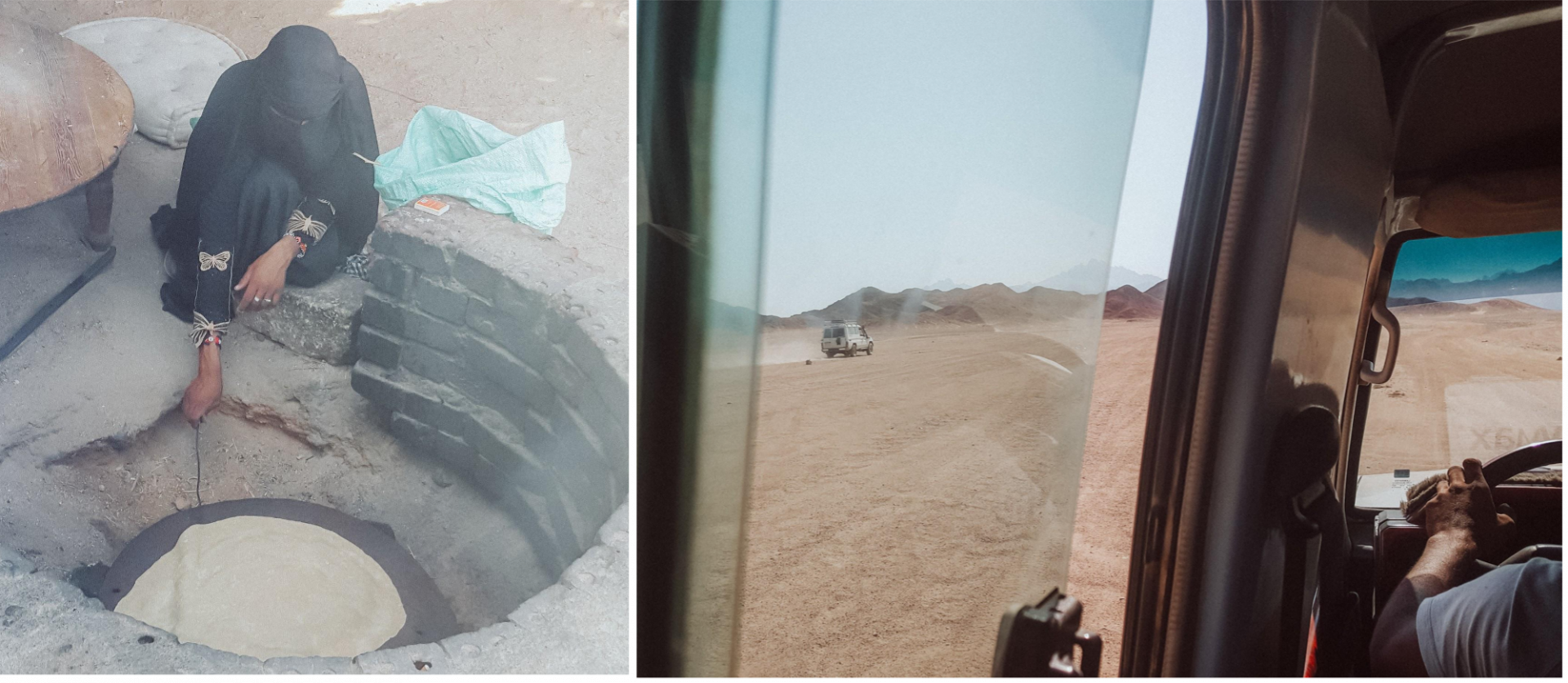
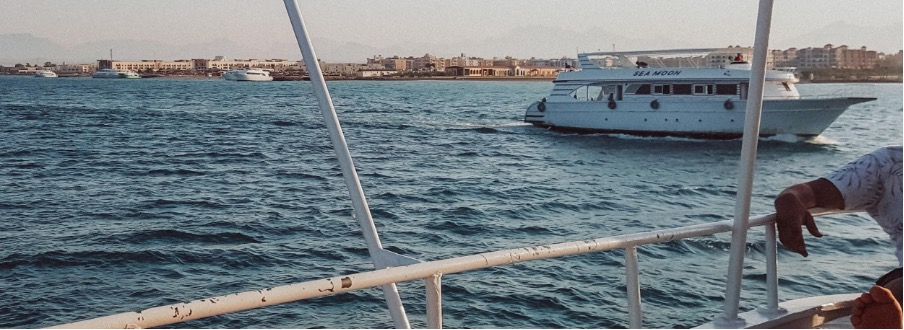
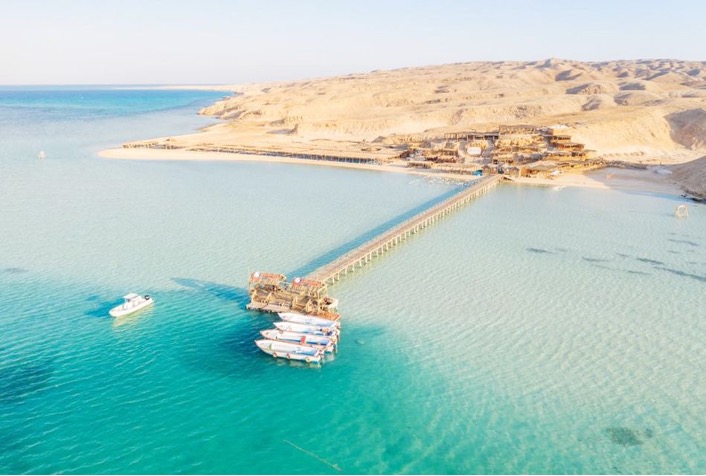
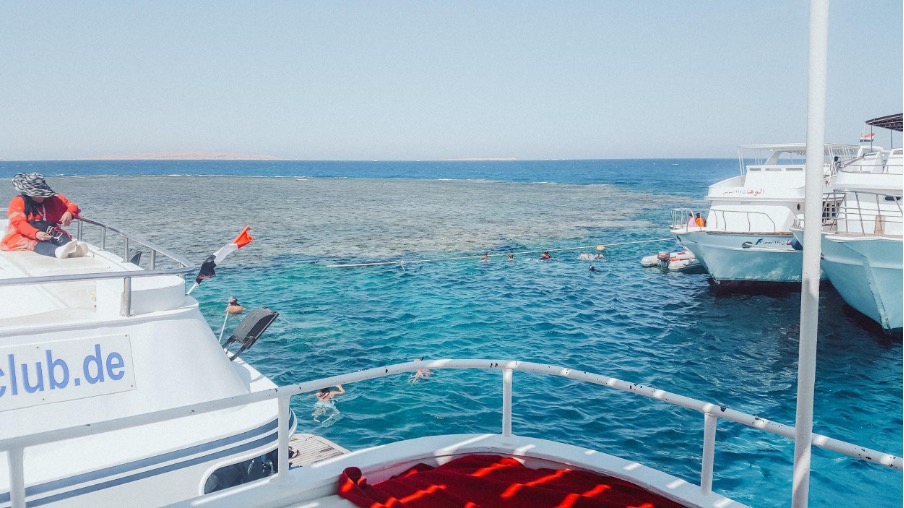
Dit bericht heeft 0 reacties